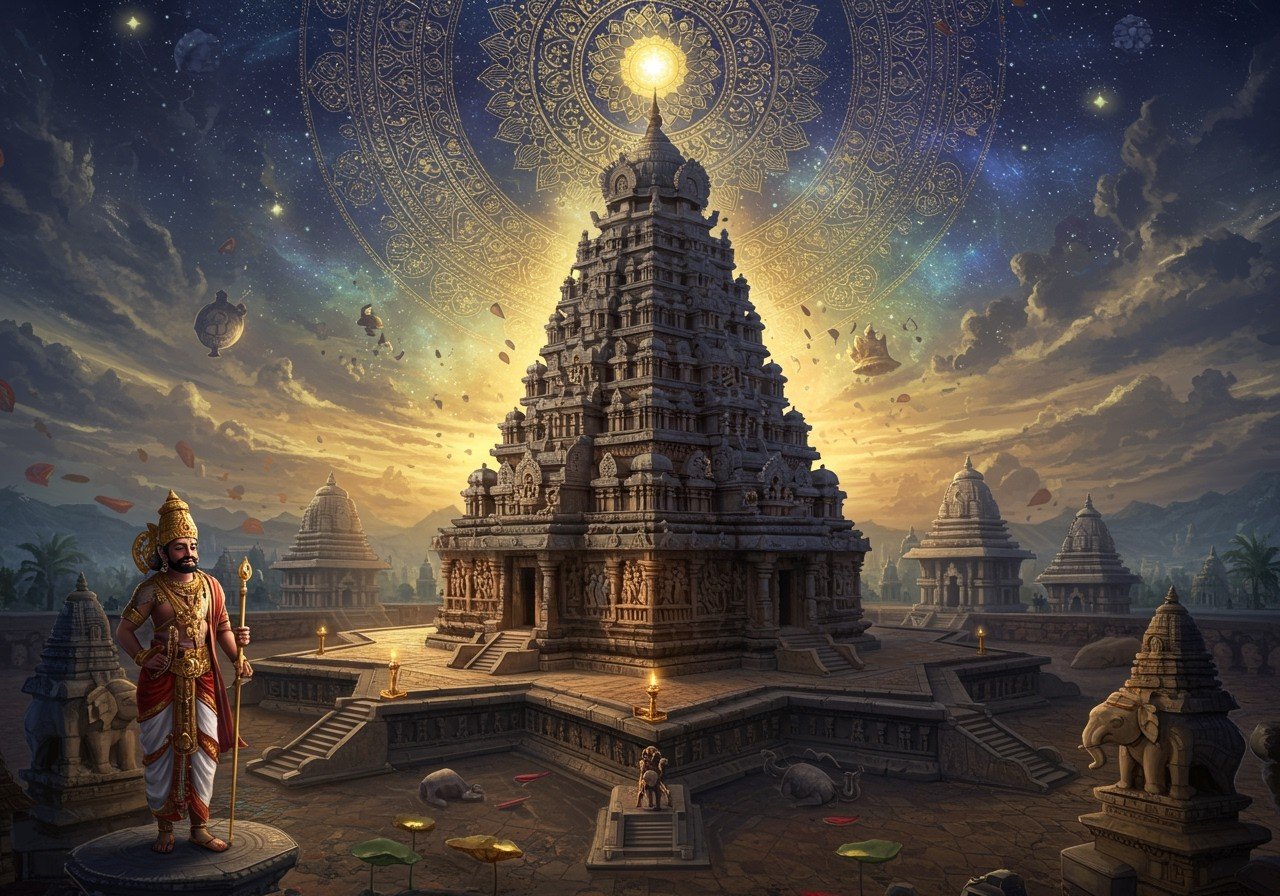
The Hoysala Empire, a prominent South Indian dynasty that reigned from the 11th to the 14th century, left an enduring spiritual and cultural heritage. This article delves into the multifaceted legacy of the Hoysala Empire, exploring the intricate connections between architecture, religion, and kingship. By examining the empire’s religious practices, distinctive temple architecture, and the vital role of temple worship in society, we gain a deeper understanding of its profound spiritual impact.
Historical Context of the Hoysala Empire
The Hoysala Empire emerged in the 11th century, reaching its zenith during the reigns of Vishnuvardhana and Veera Ballala II. These rulers significantly expanded the empire’s territories and fostered its growth. The socio-political structure of the Hoysala state was highly organized, with capital cities like Belur and later Halebidu playing crucial roles. Within the broader context of South Indian history, the Hoysala Empire interacted with other powerful dynasties such as the Cholas and Pandyas, influencing the political and cultural landscape of the region.
Hoysala Religion
During the Hoysala period, Hinduism held a dominant position, particularly Vaishnavism and Shaivism. Jainism also enjoyed royal patronage, especially under King Vishnuvardhana before his conversion to Vaishnavism. The syncretic nature of Hoysala religion fostered a harmonious coexistence and mutual influence among various faiths. Royal patronage played a vital role in the construction of magnificent religious monuments. Rituals and religious practices were deeply ingrained in society, reflecting the spiritual aspirations of the people.
Hoysala Temple Architecture
Hoysala temple architecture is renowned for its unique and intricate features. The characteristic star-shaped platform, known as ‘jagati,’ is significant for its stability and aesthetic appeal. The extensive use of soapstone (chloritic schist) allowed for elaborate carvings depicting Hindu deities, mythological scenes, and aspects of daily life. Prominent examples of Hoysala architecture include:
- Chennakesava Temple in Belur: This temple is a masterpiece of Hoysala architecture, known for its intricate sculptures and detailed carvings. It’s a testament to the empire’s artistic and engineering prowess.
- Hoysaleswara Temple in Halebidu: Another iconic example, the Hoysaleswara Temple features a vast array of sculptures and depictions from Hindu mythology.
- Kesava Temple at Somanathapura: This temple is known for its symmetrical design and intricate carvings, showcasing the skilled craftsmanship of the Hoysala period.
The ‘mandapa’ (pillared hall) and ‘garbhagriha’ (sanctum sanctorum) are essential components of Hoysala temples, showcasing the empire’s remarkable artistic and engineering skills.
Depiction of Hindu Deities in Hoysala Temples
Hoysala temple carvings prominently feature Hindu deities such as Vishnu and Shiva. Specific depictions include:
- Dasavatara: The ten incarnations of Vishnu are often depicted in intricate detail, showcasing the god’s various forms and roles in Hindu mythology.
- Various forms of Shiva: Shiva is represented in his many forms, highlighting his different aspects as a destroyer, creator, and preserver.
These depictions utilize iconographic elements like posture, attributes, and symbols. Regional styles influenced these carvings, integrating local deities into the artistic narrative. Narrative reliefs depict scenes from epic poems like the Ramayana and Mahabharata.
Role of Temple Worship in Hoysala Society
Temple worship held a central position in Hoysala society. Temples served as vital centers for religious, social, and economic activities. They promoted art, music, and dance, enriching the cultural fabric of the empire. Various societal groups, including priests, artisans, and devotees, actively participated in temple activities. Temple donations and land grants had a significant economic impact on the local economy. Festivals and rituals fostered community cohesion and reinforced social hierarchy, legitimizing the ruling class.
The Legacy of the Hoysala Empire
The Hoysala Empire’s legacy continues to resonate in contemporary India. The Archaeological Survey of India (ASI) plays a crucial role in preserving and restoring Hoysala temples. These temples, recognized as UNESCO World Heritage Sites, have a significant impact on tourism. Hoysala architecture has profoundly influenced modern Indian cultural and architectural identity, inspiring the design of subsequent South Indian temples. Cultural and spiritual practices today draw inspiration from Hoysala art and religion. The spiritual legacy of the Hoysala Empire remains deeply relevant for culturally rooted Indians.
Poojn.in: Connecting with Hoysala Spirituality
Poojn.in, India’s leading online store for cultural and religious goods, offers a wide selection of products that resonate with the spiritual essence of the Hoysala Empire. Whether you seek items for Vishnu or Shiva worship, or specific supplies for temple rituals, Poojn.in provides a diverse range to meet your needs. Explore our collection of authentic puja items, idols, and ritual supplies, carefully curated to honor the rich traditions of the Hoysala period. With convenient delivery across India, Poojn.in makes it easy to connect with the spiritual legacy of the Hoysala Empire.
Some of our relevant products include:
- Bel Mala (Aegle marmelos garland): Used in Shiva worship, this garland connects you to the divine energy.
- Tulsi Mala (Holy Basil garland): Essential for Vishnu worship, this mala enhances your connection with the divine.
- Marble Dust Shiva Lingam: Perfect for home worship, this lingam represents the divine energy of Shiva.
- Brass Laddu Gopal: A beautiful representation of Lord Krishna, ideal for daily worship.
Conclusion: Embracing the Hoysala Legacy
The Hoysala Empire’s spiritual and architectural contributions continue to inspire and enrich Indian culture. From the intricate carvings of their temples to the harmonious coexistence of multiple faiths, the Hoysalas have left an indelible mark on India’s heritage. Their devotion to religious practices and temple worship fostered community and reinforced societal structures. Today, the preserved Hoysala temples stand as a testament to their artistic brilliance and spiritual depth. They are cherished not only for their historical significance but also for their ongoing influence on contemporary cultural and architectural identity. As we honor the Hoysala legacy, we embrace the rich traditions and values they embodied, ensuring that their spiritual heritage remains a vibrant part of our lives.


